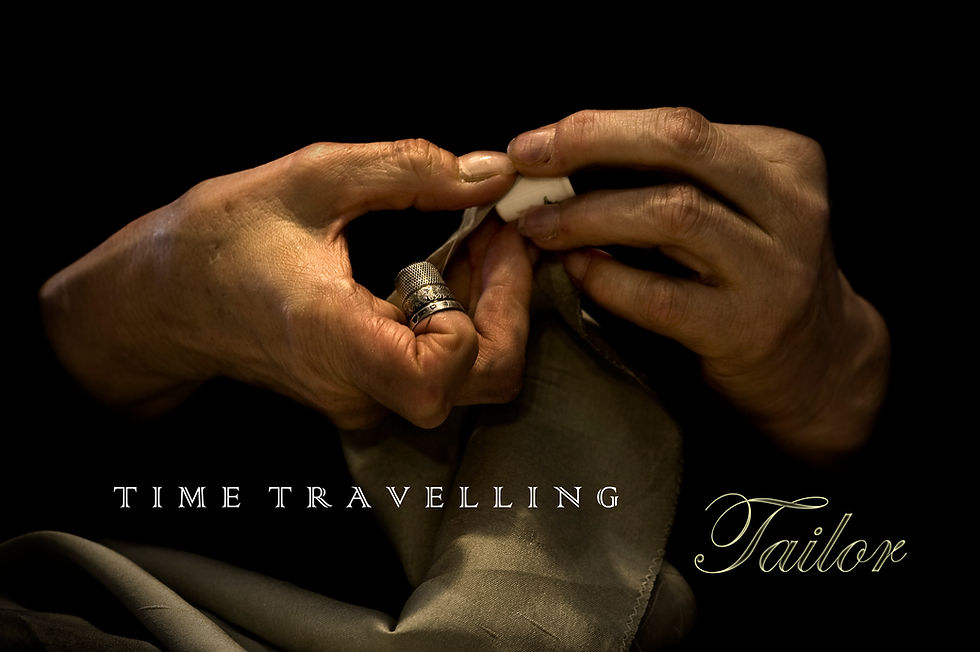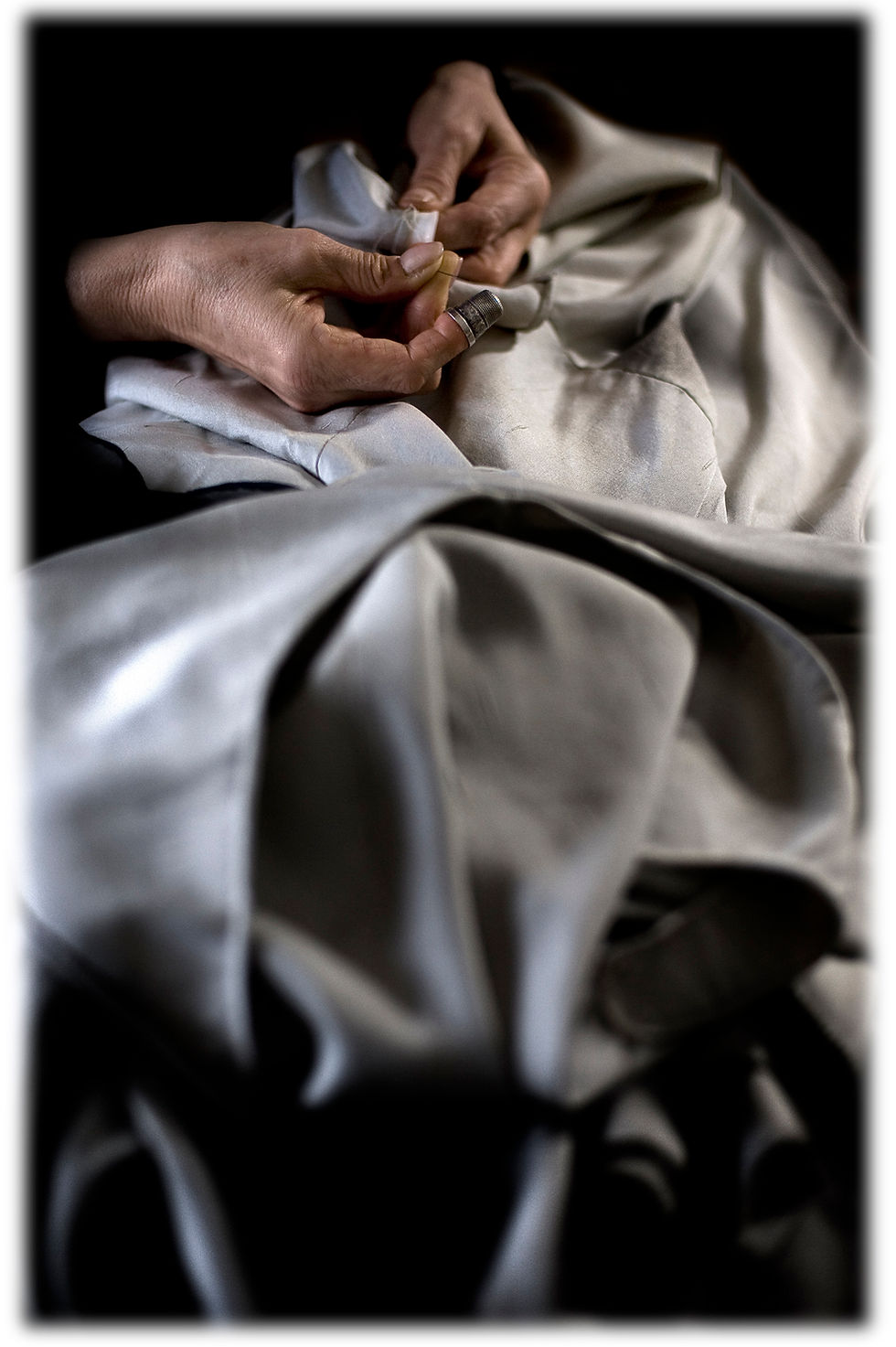Time Travelling Tailor
- Deep Hill Media
- Nov 25, 2011
- 5 min read

By Ellen Hill Photos: David Hill
WHEN Lorna McKenzie dresses each day, friends can tell exactly what mood she is in – and which era – simply from her outfit.
But her love of period dress was not born simply out of a superficial liking of the look or a romantic ideal of times past.
It is an outward show of her environmental, humanitarian and anti-establishment ethics.
“Unfortunately, the fashion industry is unethical, there’s lots of piece work and things aren’t made to last,’’ she says.
Lorna learned to sew from her mother Edna and continued it at school before honing her skills during a TAFE course in the 1980s.
I’ve always sewn,’’ she says.I really can’t remember when I learnt to sew.

“Mum ran a dressmaking business from home and she made wedding gowns, ball gowns, debutant dresses. My bedroom was the fitting room, so I grew up surrounded by all these beautiful fabrics and dresses.’’ Lorna keeps her period clothing folded in a camphor-scented Colonial era dress box just like people of the past.
I’m not fussed about fashion, I never have been,’’ she says.I’ve always dressed eclectically, I’ve always worn second-hand clothes (my mother used to be appalled) – we call it vintage now.
“Fashion in the stores never fits me – I’m very short in the waist and clothes always bunch up at the back and I hate wearing things with brand names on them. Frankly, most fashion today is designed by men for men’s bodies – no hips, no breasts, no anything.
“But if I make something, I know it is going to fit me. What I work on is timeless. I like Regency, 19th century, Italian Renaissance and 1940’s. 1940’s is my favourite, it suits me.”
By contrast, today’s ever-changing fashions represent the modern consumerist society Lorna abhors. Before that, most average people would have made do with hand-me-downs and owned a small number of clothing items.
“If you were in service you would receive only one gown a year. You’d have two or three pieces of clothing: you’d have your Saturday walking out clothing and your everyday gown and linen underneath everything and that’s it. Unless you were rich you didn’t have nightgowns.’’
Period dressmaking is part of Lorna’s ethical living standards, of bucking against a wasteful society which throws away items simply because they are no longer in vogue.
As well as being a member of mediaeval research and re-enactment group the Society for Creative Anachronisms (Dismal Fogs Shire) and the Australian Costumers Guild, Lorna has also joined diverse local and global environmental and humanitarian groups.
“I grew up with parents who lived through The Depression, so I make do and mend and I don’t like wasting things and I’m a shocking hoarder.
“My mum used to wear a singlet underneath her bra because it keeps your bras cleaner and you don’t have to wash them so much. You let things air on the line. We wash too much and waste too much water. Clothes lasted longer because of that.’’
Apart from which, period clothing is often more comfortable.
“I wear 19th century corsets and I lace into about two inches smaller than my natural waist and that’s still perfectly comfortable. My medieval corset, which I’ve made out of hemp rope, that’s the most comfortable thing I have. I love to wear it because it supports my breasts and it shapes my waist and is really comfy. Women have not worn tortuous clothes for thousands of years – we wouldn’t put up with it, we’re not stupid.’’
In fact, Lorna took part in an 80km long, three day fundraising march recently with the Napoleonic Society dressed in garb of yesteryear. And next year she will mark the bicentennial of the crossing of the Blue Mountains by re-enacting the event wearing clothing of the era.
These were clothes women wore,’’ she says.When you go to a fancy event, it might be a little bit uncomfortable because it’s a little bit tighter than what you would normally wear, but they made clothes that were comfy. Women worked all the time except for high class ladies, but even they sat and embroidered and they walked everywhere.
“They wore natural fibres, and natural fibres breathe. When I dress up in 19th century, I will have on a chemise, corset, skirt, a petticoat, lots of petticoats or a crinoline or a farthingale or something like that. Over that I will then have my dress, but it is all made out of natural fibres – mostly linen and wool so it’s not uncomfortable.’’
But then there is the fun of playing dress-ups and living the life of whomever she wishes.
“When I am wearing a particular dress for a particular period, I am time travelling,’’ Lorna says. “I am living with a woman of that period. I make it like she did and then I wear it and I get laced in and I’m suddenly in another time. You stand differently; you move differently and even speak differently. It’s empowering. You don’t need a tardis; you just need to make a new gown for a different period.

“For example, as a member of the Society for Creative Anachronists, a medieval society, I’m Bethan, an Italian Renaissance woman wealthy enough to be able to have nice clothing but I’m not really, really wealthy.’’
Most re-enactment groups require costumes to be 90 per cent authentic, but generally Lorna is more relaxed with her period reproductions.
“In the historical world they don’t like you to make things there isn’t proof and evidence of. There’s also the fashion police, the informal self-appointed people (they’re called ropers from the Tudor period).
“Of course if you’re making something for a competition it has to be correct and you have to use the exact techniques of the period. But if nobody’s judging it, you want to have the outside looking exact, but what you do on the inside is up to you.

“I tend to make what I call generic gowns of the period. I look at all the elements and I might decide that I want that neck and that whatever and then put them all together.’’
A case in point is the 1940s fashion range Lorna is creating using original patterns from the era which once belonged to a well known Blue Mountains dress maker.
“I am designing a 1940s range, but I am taking elements from that time and making them for 21st century women because sizing was totally different in vintage patterns,’’ Lorna says.
“My expertise is vintage and historical sewing. I am not a 21st century designer. I’m a 21st century excellent copyist from the past, I’m an adaptor.’’
And Lorna is not alone with her dress-up box.
“Because of social networking now, I’m in contact with people all over the world who do this. I used to think I was weird and strange but there are thousands of us, probably millions of us, and I no longer feel strange or different. I feel I’ve got a community, and I adore that because now I know there are people who create like me and make like me, and they don’t watch television 24/7 and they sing in choirs and life is an adventure.
“There are parts of me that really like past eras and wish I could live there because consumerism has taken us over today. But really I’m glad I am a woman living now. Until the 19th century, while they believed women had a role, men were still debating whether women had souls.’’



Comments